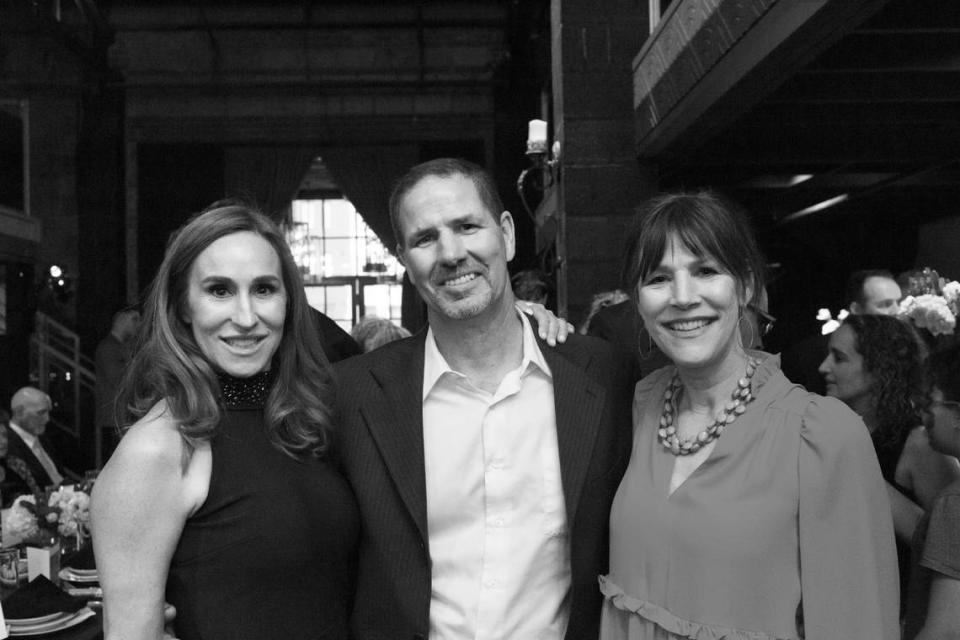The Kentucky boy who fell to Earth, and how we all survived
My recent stay in a hospital brought back memories, at age four, of family-centered care at the University of Kentucky Hospital. I experienced first-hand how the institution embraced the practice of involving inter-generational family members to substantially improve patients’ recoveries.
In 1971, my six-year-old sister and I were the exception to the hospital’s rule banning children from visiting patients. Our maternal great-grandmother, born in the 1800s, who once owned a hair salon on the mezzanine of Lexington’s second largest hotel, the Lafayette (now the Lexington-Fayette Government Building), calmly chaperoned us in a waiting area before we got the go-ahead.
We saw the aftermath: our active brother trapped in a full plaster body cast with his broken right leg elevated. Sid was the eight-year-old who fell to Earth, the only survivor of a plane ’s vertical dive onto a runway. Onlookers watched two planes collide in the sky and saw the carnage that ensued. They told their stories to the press and in witness reports. But a child would be the only one who really knew what it was like to be at the scene.
They took off from Lexington on a clear, sunny, summer Saturday afternoon after leasing a single-engine Cessna Skyhawk. My father, a Lexington National Life & Accident insurance agent, and his cousin Donny would take my brother Sid on his first flight. Donny landed the plane at a farm equipment wholesaler in Harrodsburg, where they got out, drank bottles of Coke, and picked up a piece of machinery. After taking off again, my father pointed below to our grandfather ’s farm in Burgin, a stone home with a smokehouse in the back, both matching the freestanding rock fences built in the 1800s that bordered the country roads. My brother asked my father for the time. It was 2:15 p.m.
They would “piggyback,” or fly underneath another aircraft—a single-engine Piper Comanche. One witness said the planes were no more than five feet apart. A farmer described the Piper as deliberately “hotdogging” and flying recklessly. The two planes disappeared behind trees. There was no time to brace for impact. A state police officer was quoted at the scene as saying, “It just went in nose first.”
The story of the disaster was featured on the front-page of The Lexington Herald-Leader the next day, reporting that the “Cessna crashed nose first onto the concrete runway, 100 yards from the end. The nose of the aircraft dug a small crater in the runway; it then flipped upside down and landed about 25 yards further down.” The permanency of this newspaper story with our family’s home address and a large image of the smoldering wreckage brought home this tragedy as not just a nightmare, but all too real and permanent. The Piper and the two men in it landed safely. My father and his cousin were killed on impact. The crash happened about 3 p.m. A man who raced toward the Cessna after seeing the two planes collide described first his horror after surveying the dead bodies, then his shock at pulling out alive a little boy from the wreckage.
The strap around Sid ’s waist did just what it was designed to do. It held him, hanging upside down. But the violent crash caused the metal belt buckle to rupture his intestines. Sid was left on the ground to wait for the ambulance for the 59-mile ride to the UK Hospital. There, in the busy emergency room, he lay bleeding in a hallway with a broken back and leg and spinal cord injuries. No one thought he would make it.
The dangers he faced at the hospital after his brush with death were meticulously shared over the years. My mother ’s 5 ’9” frame walking to a ringing phone in the kitchen, pressing her long fingers into the countertop and collapsing after hearing the news that her husband had been killed, and then being given instructions to meet her eight-year-old son at the hospital ’s ER. When Sid saw my mom, he asked about our dad. Then he gave his own explanation of the crash. Showing the workings of a child ’s mind, his understanding of the situation was, “Donny put the brakes on really fast.”
Physically, my brother would recover completely from the crash. However, nobody looked at him as ordinary-ish. I saw how he was treated differently by teachers, kids and family. Here ’s how I sum up my brother after his healing: If the world was coming to an end and I could have only a handful of people on my team for survival—I ’d pick my brother Sid.

Then four decades later, I’d be the patient in another academic hospital with an infection in my port. There, I’d reflect back on my first hospital experience at UK— my sister and I quietly walking up the stairs and down the long, sterile corridor to be with our broken brother. This time, I looked up and breathed deeply when I saw my son Alex and husband, John, enter my hospital room, realizing the healing power of family, the sense of belonging for this old Kentucky family.
Kelly Motley was born and raised in Lexington, graduated from UK and lives with her husband in Nashville. She is the author of the new book, “The Fight for My Life: Boxing Through Chemo.”

 Yahoo Movies
Yahoo Movies 